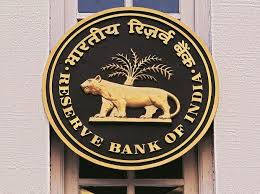 Janjivan Bureau / New Delhi : The Reserve Bank of India (RBI) on Friday put a three-month moratorium on the payment of all EMIs and loans as well as cut lending rates for the industry as part of a four-pronged package of measures to counter the risks posed to the economy due to the Covid epidemic.
Janjivan Bureau / New Delhi : The Reserve Bank of India (RBI) on Friday put a three-month moratorium on the payment of all EMIs and loans as well as cut lending rates for the industry as part of a four-pronged package of measures to counter the risks posed to the economy due to the Covid epidemic.
The RBI has warned lending institutions that rescheduling must not be treated as a change in terms and conditions of loan agreements and that there must not be an asset classification downgrade.
The measures will inject a total liquidity of Rs 3.74 lakh crore into the system, said RBI Governor Shaktikanta Das while addressing a press conference at the end of a three-day meeting of the Monetary Policy Committee (MPC) which was advanced by a week in view of the grave situation facing the economy.
This is the third economic package announced by the Government. In the first tranche, a number of regulatory decisions were relaxed that included deferment of payment of life and health insurance policy premium, In the second package on Thursday, the Government reached out to the poor and farmers with free foodgrain, cooking gas and cash transfer initiatives.
The RBI’s measures earned praise from Union Finance Minister Nirmala Sitharaman who had announced a Rs 1.7 lakh crore package for the economically vulnerable. “RBI chief’s reassuring words on financial stability. The three-month moratorium on payments of term loan instalments (EMI) and interest on working capital give much-desired relief. Slashed interest rate needs quick transmission,” she said.
The RBI chief said while the situation was uncertain, the macroeconomic fundamentals at this point were better than during the time of the 2008-09 financial crisis.
The RBI’s first measure deals with liquidity management to ensure that banks have enough money to lend. The biggest impact will be from the reduction of cash reserve ratio (CRR) by one per cent to release primary liquidity of Rs 1.37 lakh crore. The MPC, by a 4:2 majority, cut interest rate by 75 basis points to 4.4 per cent, the RBI Governor said.
In order to help banks operate with a reduced staff strength, the RBI has also reduced the requirement of minimum daily CRR balance maintenance by 10 per cent for the next three months. The other two measures in the liquidity segment include RBI auction of targeted term repos of up to three years tenor of up to Rs 1 lakh crore and easy overnight borrowing by banks by reducing the statutory liquidity ratio (SLR) requirement in this respect. This measure will release another Rs. 1.37 lakh crore in the system. In order to ensure easy flow of funds, the RBI was forced to suspend implementation of two reforms recommended after the 2008-09 banking crisis.
The RBI’s second set of measures under the “regulation and supervision” rubric deferred all outstanding loans as on March 1. It has asked all lending institutions for an across-the-board shift of the repayment schedules and all subsequent due dates by three months. This relaxation applies to the industry for cash credit and overdraft facilities.
The third set of measures relates to financial markets and is intended to reduce the arbitrage between onshore and offshore markets in order to reduce the pressure on the rupee. The RBI has now allowed banks to participate in the offshore Indian Rupee (INR) derivative market with effect from June 1.
The RBI chief warned that the country is in an extraordinary situation which required a war effort using conventional, unconventional tools. Global slowdown can even deepen with adverse implication for India though the crude oil slump is an upside for India, he added.

















